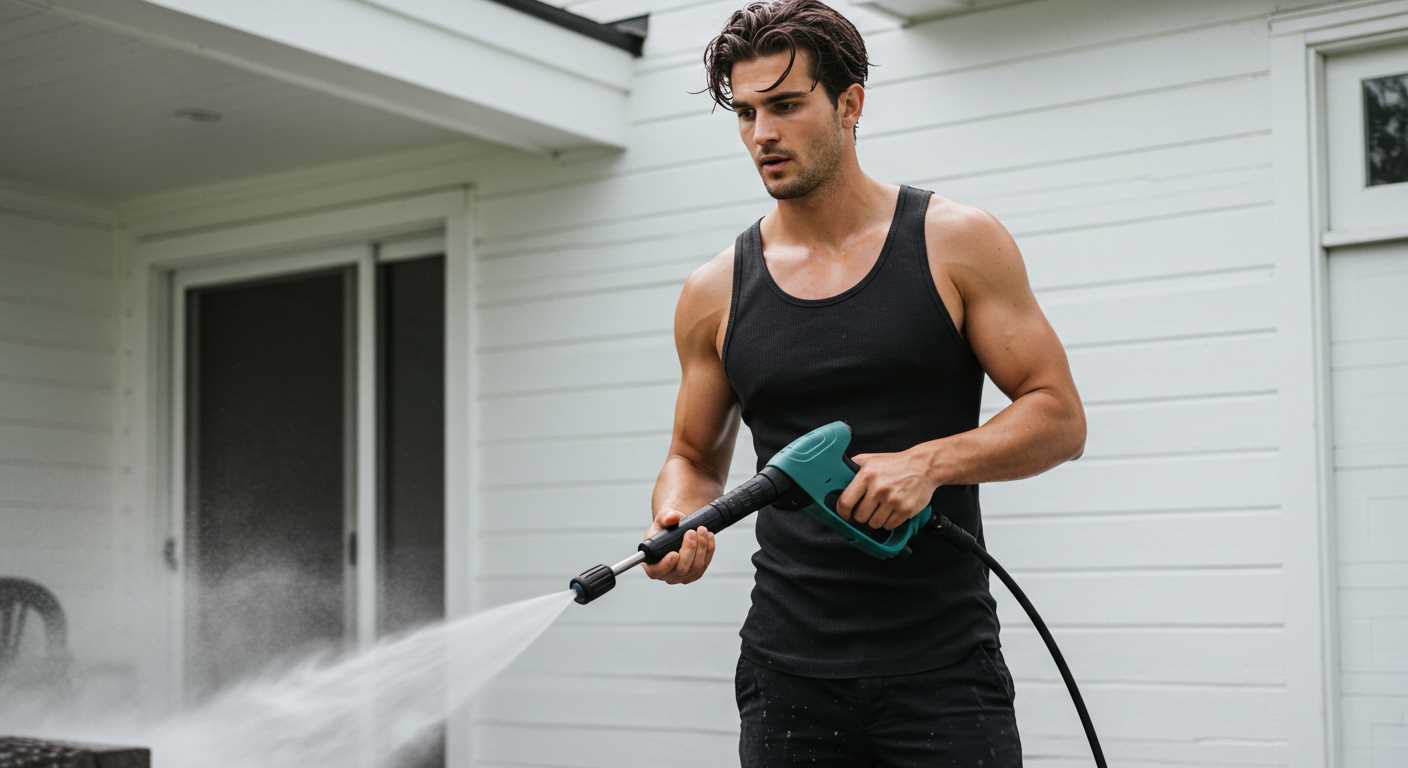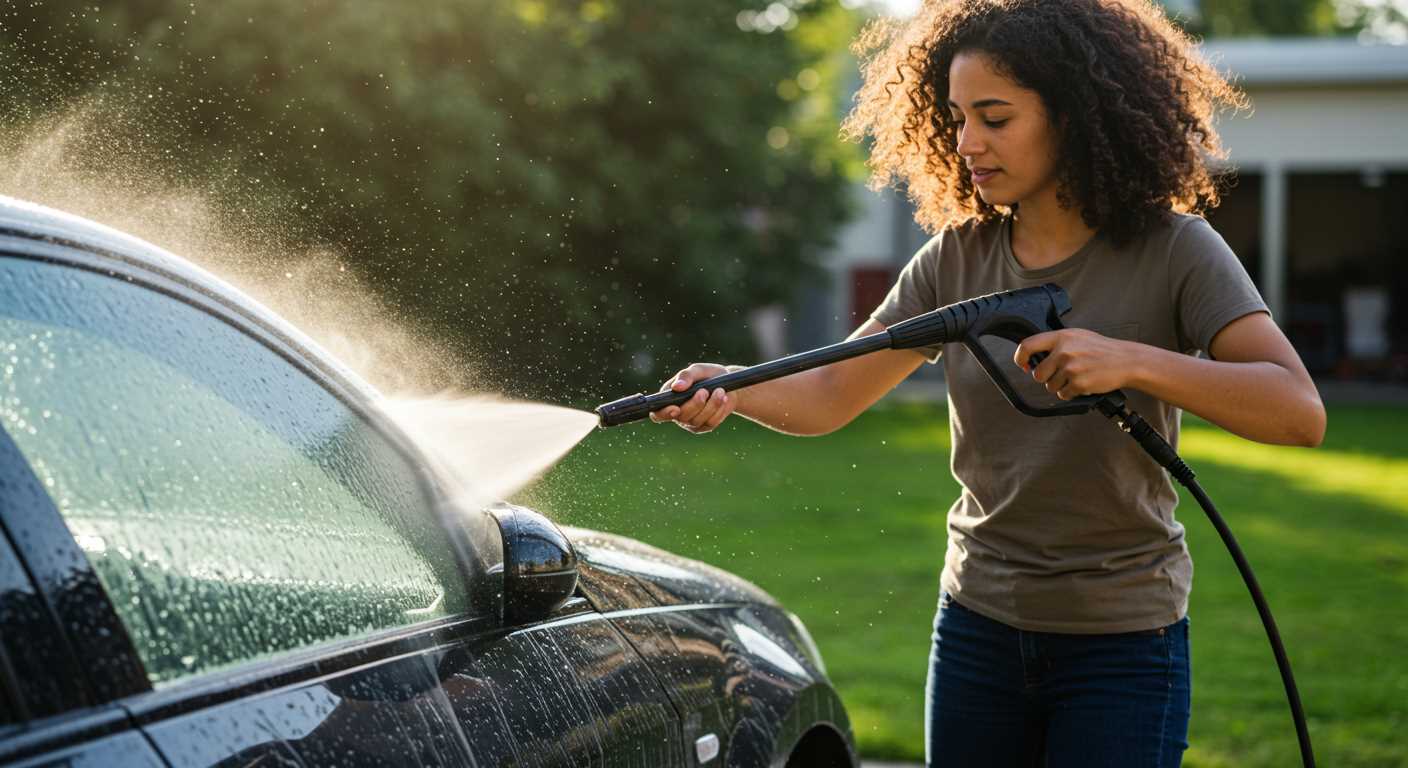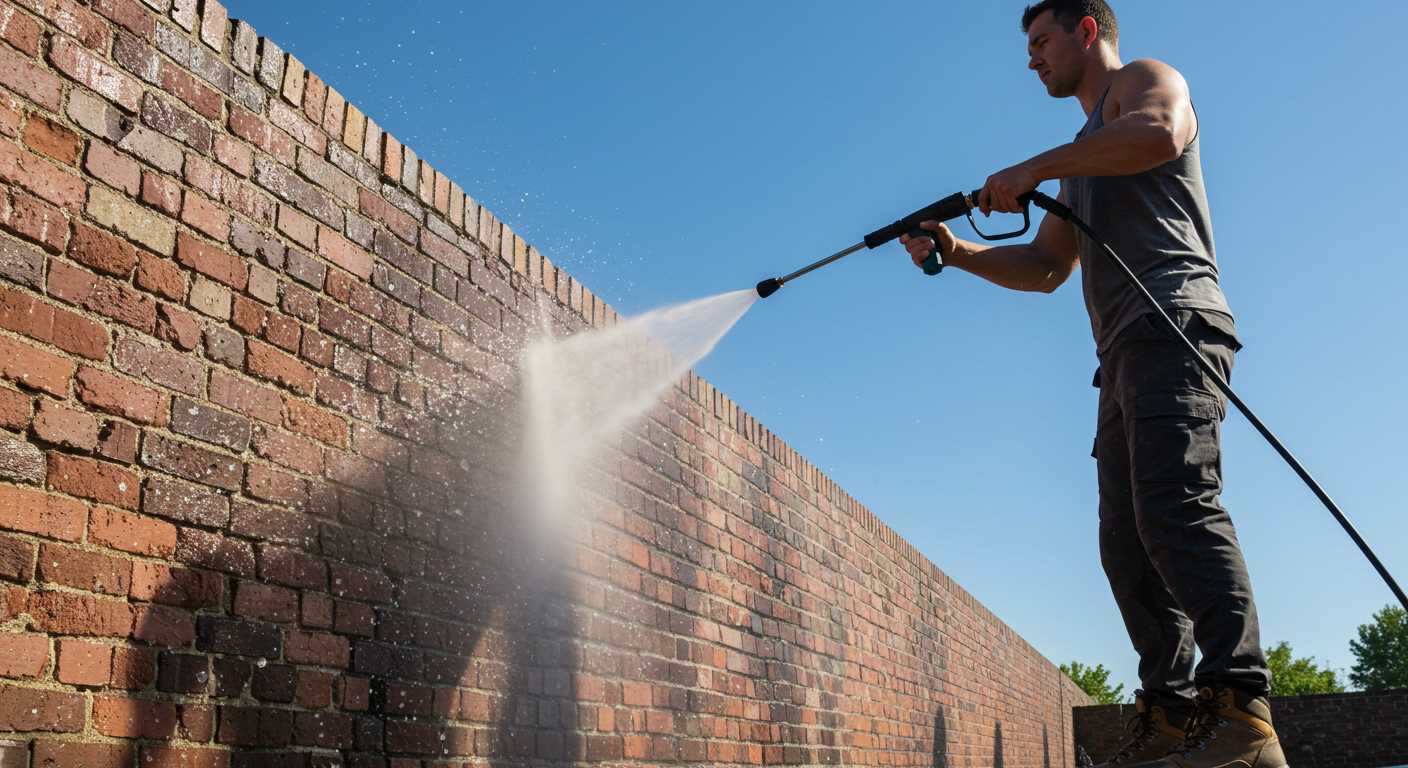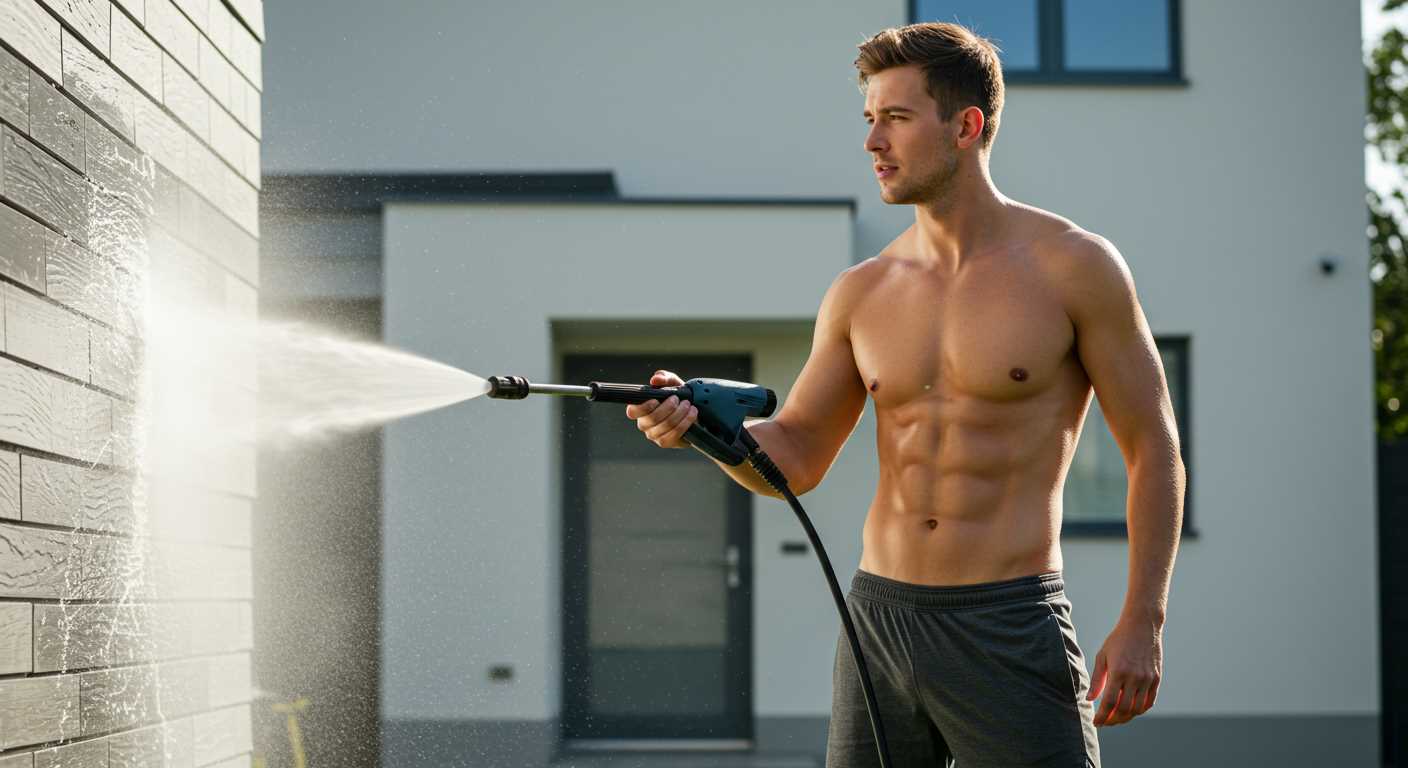

Regularly inspecting and maintaining your cleaning unit is crucial for optimal performance. Start by checking the water inlet filter; this component often accumulates dirt and debris, which can hinder water flow. Remove and clean the filter thoroughly, ensuring it’s free from obstructions.
Next, inspect the high-pressure hose for any signs of wear or damage. A frayed or cracked hose can lead to leaks or service interruptions. Should you find such issues, replace the hose immediately to prevent further complications during use. Don’t forget to tighten all connections; loose fittings can cause pressure loss.
Cleaning the nozzle is another critical step. Residue build-up can significantly decrease spray efficiency. Use a pin or a needle to clear any blockages in the nozzle, then rinse it with clean water. For stubborn blockages, soak the nozzle in a cleaning solution suitable for this purpose.
Lastly, check and clean the detergent tank regularly. Improper maintenance can lead to clogs. Ensure that the tank is emptied and rinsed after each use to avoid residue build-up that could affect future applications.
By following these targeted steps, you can prolong the life of your equipment and maintain its performance at peak levels.
Maintenance Tasks for Your High-Pressure Cleaner

Replace the water filter regularly. A clogged filter can lead to reduced performance and potential damage. Check it at least every three months, or more frequently if you use the machine often.
Flush the system with clean water after each use. This helps remove detergent residues and prevents clogging of internal components.
Check and Replace Seals

Inspect seals and O-rings for wear and tear. Damaged seals can lead to leaks and loss of pressure. Replace them if they appear cracked or brittle.
Use original parts when replacing components. This ensures compatibility and longevity, maintaining the unit’s optimal performance.
Winter Preparation
Before colder months, empty the water from the system to prevent freezing damage. Also, consider using an anti-freeze solution specifically designed for cleaning equipment to protect internal parts during storage.
Periodically inspect the electrical connections for wear. Unstable connections can lead to operational issues or safety risks.
Keep the exterior clean. Wipe down the casing and check for any debris that might obstruct airflow around the motor. This also helps in maintaining the aesthetics of your equipment.
Preparing Your Workspace for Maintenance
Ensure to clear the area of any debris or obstacles before beginning. A tidy space prevents trip hazards and allows easier access to all components. Use a flat surface, free of clutter, to set the device securely.
Gather Necessary Tools

Collect all essential tools beforehand. You’ll need a set of screwdrivers, wrenches, and possibly pliers. Having a multimeter handy for electrical checks is also wise. Organising these tools in a portable toolbox can streamline the process.
Check for Water Supply and Drainage
Confirm a reliable water source is within reach, ensuring hoses are not kinked or damaged. Set up your workspace near a suitable drainage area to manage excess water during cleaning. This moves water away, preventing unwanted pooling around your workspace.
Cleaning the Water Filter of Your Pressure Cleaner
Regularly examining the water filter is necessary for optimal operation. Locate the filter, typically situated where the hose connects to the unit. Remove it gently, taking care not to damage any fittings.
Rinse the filter under running water to dislodge dirt and debris. For stubborn blockages, a soft brush can help remove accumulated particles. Avoid using harsh chemicals, as they may degrade the filter material.
Reinstallation
After cleaning, ensure the filter is completely dry. Reinsert it into its original position, confirming a snug fit to prevent leaks. Reconnect the hose and turn on the machine to check for any signs of water escaping.
Frequency of Cleaning
Cleaning the filter should be part of your regular maintenance routine. Depending on usage and water quality, inspect it every few months or more frequently if the unit shows signs of reduced performance.
Inspecting and Replacing High-Pressure Hose
Regular evaluation of the high-pressure hose is crucial for optimal operation. Begin by visually examining the entire length for any signs of wear, such as cracks, bulges, or leaks. Pay special attention to the fittings; loose or damaged attachments can lead to pressure loss.
- Check the hose for kinks or tight bends that could restrict water flow.
- Look for any visible fraying or damage near the ends, where the hose connects to the machine and the gun.
If any damage is detected, replacement is necessary. To replace the hose, follow these steps:
- Disconnect the unit from the power source and remove the water supply.
- Ensure all residual water pressure has been released before detaching the damaged hose.
- Unscrew the fittings from both ends of the hose. Use an adjustable wrench if needed, but be careful not to damage the connectors.
- Attach the new high-pressure hose by securing the fittings tightly. Ensure they are aligned properly to prevent leaks.
After replacing the hose, perform a quick inspection prior to usage. Turn on the machine and check for leaks around the connections, and observe the hose under pressure to ensure no bulging or abnormal behaviour occurs. Following these steps will help maintain the performance and prolong the lifespan of your equipment.
Checking and Maintaining the Nozzle and Detergent Tank
Begin by examining the nozzle for any obstructions or wear. Remove it from the lance and inspect the orifice; if it’s clogged, clear it using a thin object, like a pin or needle. Avoid using metal tools, which can scratch the nozzle. If there’s significant damage or corrosion, replacing the nozzle is advisable.
Cleaning the Detergent Tank
Drain any remaining detergent from the tank to prevent residue build-up. Use warm water to rinse the tank thoroughly. For stubborn stains, a mixture of warm water and mild detergent can be used. Ensure all cleaning agents are rinsed away to avoid contamination during future use. Once clean, inspect the tank for cracks or leaks, which could compromise its function.
Maintenance Tips

| Part | Maintenance Action | Frequency |
|---|---|---|
| Nozzle | Inspect for blockage and damage | Every use |
| Nozzle | Clean or replace as necessary | As needed |
| Detergent Tank | Drain and rinse | After each use |
| Detergent Tank | Inspect for cracks | Monthly |
By maintaining the nozzle and detergent tank, you ensure optimal performance and longevity of the equipment. Regular checks not only enhance efficiency but also prevent potential damage during operation.
Testing the Motor and Pump Functionality
Start with an inspection of the electrical connections. Ensure that the power cord is intact and securely connected. If there’s any damage, replace it before proceeding.
Next, check the motor by plugging in the unit and starting it without any attachments. Listen carefully for unusual sounds such as grinding or excessive rattling. A smooth, consistent hum indicates proper operation.
Assessing Pump Performance
To evaluate pump functionality, operate the machine with water flowing through it. Observe the pressure gauge. If it’s not building pressure as expected, it may signal issues within the pump or internal components. Monitor for leaks around the pump seal; any visible leakage can indicate wear.
If the pressure fluctuates rapidly or is too low, inspect the unloader valve, as it controls the pressure output. Test it by adjusting the valve and observing any changes in pressure stability.
Final Testing Steps
For a thorough assessment, disconnect the high-pressure hose and turn the unit on briefly. Ensure water flows freely from the pump. This helps identify any blockages that could hinder performance. After completing the tests, ensure all components are reconnected securely before regular use.
Storing Your Karcher Pressure Washer for Longevity
After using your cleaner, ensure it’s fully drained of water and detergent. Run the machine for a few moments after disconnecting the hose to expel any remaining liquid from the system.
Find a cool, dry location for storage. Avoid areas where temperatures drop below freezing, as cold can damage internal components. A garage or shed is ideal, but ensure it’s well-ventilated.
Cover the device with a protective cover to prevent dust buildup and accidental damage. This additional layer acts as a barrier against environmental factors that may affect its integrity.
Store hoses and attachments neatly to avoid kinks and tangles, which can lead to premature wear. Use hooks or reels specifically designed for hose storage.
Disconnect any accessories, including nozzles and detergent tanks, and clean them separately. This helps in preventing blockages and maintains their condition for future use.
Finally, inspect the power cord for any wear or damage before putting the machine away. This ensures safety and readiness for the next operation.







